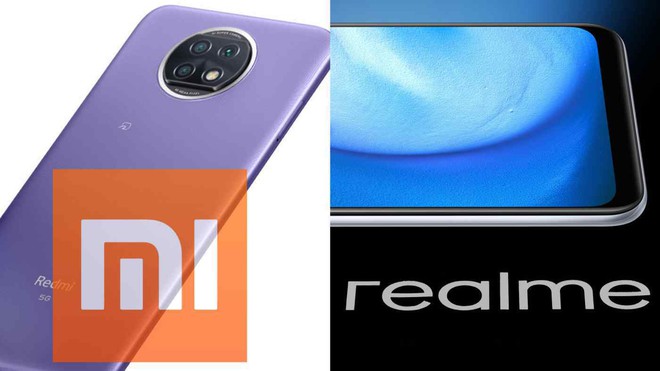Low-cost Chinese phones ‘getting in the way’ iPhone 5G
- Tram Ho
On February 26, Xiaomi Redmi Note 9T sold exclusively through SoftBank in Japan with the best 5G performance in the price range. If you meet certain conditions of the network operator such as connecting to a new network or presenting a student card, the retail price of the device is only 1 yen (212 VND).
According to an employee of a retail store in Tokyo, customers who want to experience the new product will come and try the device. Redmi Note 9T uses a 48MP camera, MediaTek chip and LCD screen to reduce costs.

Low-cost 5G phones like the Xiaomi Redmi Note 9T and Realme V3 5G are hindering the iPhone 12 5G. (Photo: Nikkei)
Xiaomi entered the Japanese market from the end of 2019. Before IPO in 2018, it was famous for keeping its profit margin below 5% for hardware products such as smartphones. The company sold 145.8 million devices in 2020, up 17 percent from the previous year, according to Counterpoint Research. This is in contrast to Huawei, whose sales dropped more than 20% in the same period and had to sell low-cost mobile brand Honor due to US sanctions.
With the launch of Apple’s iPhone 12, all major smartphone brands already have 5G phones. Even so, the cheapest model – the iPhone 12 mini – costs 74,800 yen (VND 15.8 million), much more expensive than the Chinese phone.
After “abdominal surgery” Xiaomi Mi10 Lite 5G, research firm Fomalhaut Techno Solutions revealed the secret in cheap Chinese devices. The original price of the device was 38,854 yen (8.2 million VND) but then decreased to 29,518 yen (6.2 million VND).
The first thing that Minatake Kashio, the Fomalhaut Director, points out is the 6.6-inch OLED screen. This component is manufactured by Samsung, but unlike the panel on the iPhone 12, it uses an old panel, which costs about $ 45. The downside of the glass panel is thicker, heavier, but cheaper than the plastic panel, priced at about $ 100. Recently, the price of OLED screens has decreased due to the increase of Chinese manufacturers in the market.
The SoC chip in the device also contributes to lower production costs. Xiaomi Mi10 Lite 5G uses a mid-range Qualcomm Snapdragon 765G chip. It’s not powerful enough for complex tasks like 3D games, but good enough for casual use. The antenna is not more expensive than 4G models because it does not support mmWave. Currently, the iPhone 12 only supports mmWave in the US, so this is not a disadvantage for Xiaomi in Japan.
In contrast to Apple and Samsung that design their own products, Chinese companies often rely on modules that are available from suppliers. According to one supplier, they are known for their frugality.
New 5G smartphones appear in 2019 but not expensive anymore. According to research firm Omdia, if in 2019, no 5G smartphone costs less than 400 USD (9.2 million VND), by the third quarter of 2020, 50% will reach this price.
From the last quarter of 2020, sales of high-end 5G smartphones tend to increase with the introduction of the iPhone 12. However, at the same time, Chinese firms such as Xiaomi and Vivo also actively introduce devices priced under 2,000 yuan ( 7.1 million), even cheaper. For example, Realme launched V3 5G with a starting price of only 999 yuan (3.5 million dong).
Realme claims to have popularized 5G technology and is trying to reach young audiences, customers in emerging markets. By the end of last year, its products were sold in more than 60 countries and regions. Realme sold 42.4 million smartphones in 2020, up 60% from 2019.
The supplier also expanded its product line to meet demand from Chinese low-cost mobile phone manufacturers. In January, Qualcomm introduced the Snapdragon 480, the first 5G-enabled low-end smartphone chip. Chip company Unisoc also commercializes 5G chips at prices lower than those of Qualcomm and MediaTek.
The “Made in China 2025” plan lists next-generation communications technologies like 5G as a priority. With the rise of low-cost equipment, the number of smartphones and other 5G-connected machines in China has surpassed 200 million by the end of 2020. The country currently has more than 700,000 5G base stations and plans to add 600,000 stations in this year to ensure nationwide 5G coverage.
According to analyst Eiji Mori, the percentage of 5G smartphones sold is about to increase. Although Android accounts for more than 80% of the global smartphone market, Apple is still hugely popular in Japan, where iOS devices hold nearly 50% of the market. However, low-cost Chinese 5G phones are likely to turn the market around.
According to Nikkei
Source : Genk
